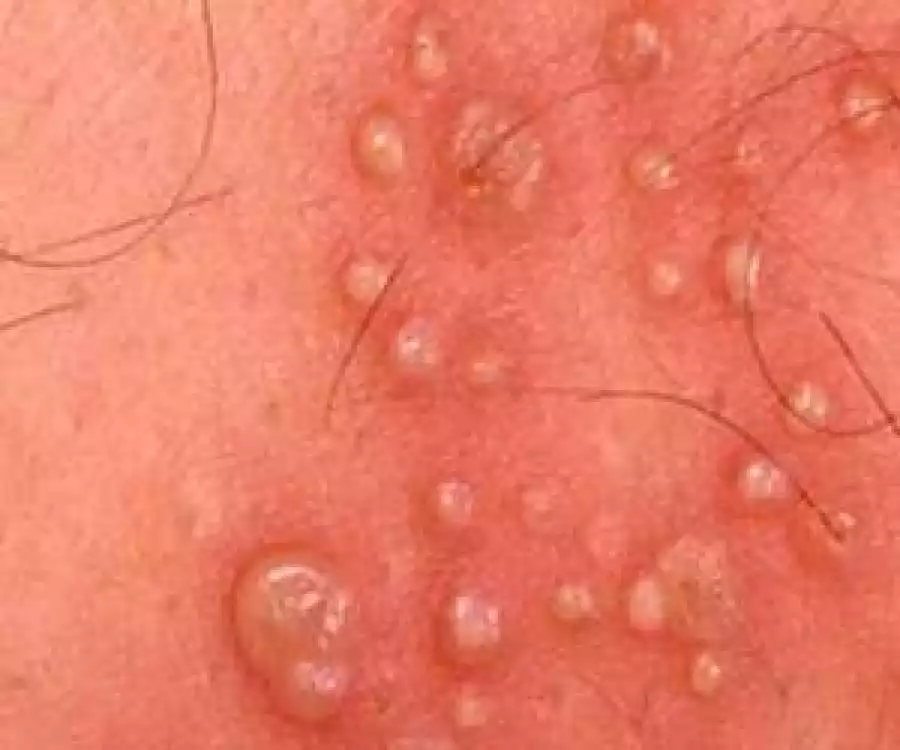Vaginal Heat Rash Is The Deadly Disease Ladies Can Have…It Kills In Less Than 6 Hours. See Images, Symptoms, Location, And Treatment

Vaginal Heat Rash Is The Deadly Disease Ladies Can Have…It Kills In Less Than 6 Hours. See Images, Symptoms, Location, And Treatment
HIV Overview
HIV, or human immunodeficiency virus, is a retrovirus that causes AIDS (acquired immunodeficiency syndrome). The virus breaks down the immune system, making the infected person susceptible to opportunistic attacks from diseases and cancers.
If you’re concerned that you may have or may have been exposed to HIV, you should absolutely get tested as soon as possible. You can find a testing facility near you at aids.gov by entering your zip code. In the meantime, this article will go over some of the common symptoms you may experience during the early stages of the disease, in particular the “HIV rash,” as well as provide information about treatment and medication.
Early Symptoms of HIV
Shortly after infection, you may experience a short ‘flu-like’ or ‘mono-like’ illness. This is known as the ’seroconversion illness.’ Symptoms include nausea, vomiting, night sweats, swollen glands, fever, mouth ulcers, joint pain, loss of appetite, and weight loss.
The seroconversion illness can occur anywhere from two weeks to six months after infection. Roughly 70% – 90% of people will experience this seroconversion illness, though a small percentage won’t have any symptoms at all.
How to Recognize Early Symptoms of Primary HIV
HIV Rash Symptoms
One of the early signs of HIV infection is a rash. Keep in mind, though, that while a rash is the most common symptom of HIV infection, it is not always caused by HIV. The rash could be the result of your skin’s sensitivity to chemicals or sunlight or it could be a side effect of certain HIV medications, which will be discussed below. According to the UC San Diego Healthcare clinic, roughly 90% of people with HIVexperience skin symptoms at some stage of the disease.
HIV Rash Locations
The rash usually appears as a red area of flattened skin covered with red bumps. The rash can form in any part of the body, but most often occurs on the chest and the face. It can also appear on the hands and feet and may co-present with mouth ulcers. You can see examples of what the rash looks like in the images below.
HIV Rash Images



HIV Rash Treatment
Most rashes can simply be treated with over-the-counter medications such as calamine lotions. More severe or persistent rashes may require a prescription from a doctor. In addition to these treatments there are also some lifestyle changes that may help get rid of these skin conditions. These include:
Avoiding hot showers and baths
Avoiding harsh chemical toiletries and detergents
Wearing cool fibers like cotton to allow ventilation
Using an air humidifier
Avoiding heat and direct sunlight, which can make the skin more sensitive.
HIV Medication Side-Effects
In addition to being one of the most common early symptoms of HIV, rash is also one of the most common side effects of HIV medications. The vast majority of rashes due to HIV medicine are not serious and will go away on their own.
However, if you are on HIV medications and you notice a rash, you should be sure to inform your doctor as it could be a symptom of a rare but life-threatening hypersensitivity reaction. A hypersensitivity reaction is a rare allergic reaction to a medicine. Other symptoms could include fever, fatigue, difficulty breathing, and kidney damage.
Stevens-Johnson syndrome (SJS) is a rare but life-threatening hyper-sensitivity reaction associated with some HIV medications. Symptoms include fever, pain or itching on the skin, swelling of the face and tongue, blisters around the mouth, nose, and eyes, and a quickly spreading rash.
When SJS affects at least 30% of the skin’s total surface area, the condition is called toxic epidermal necrolysis (TEN). TEN can cause the skin to peel away in some places, exposing the patient to further infections. In the past, there was very little that one could do about the rash, but medical advancements and proper care are helping patients in effectively treating the rash.
HIV Medication and Hypersensitivity
Nevirapine (also known as Viramune) and Abacavir (also known as Ziagen) are two HIV medications that have been known to increase skin sensitivity and make it more susceptible to hypersensitivity reactions.
Nevirapine: To reduce the risk of a hypersensitivity reaction, the doctor will start you on a gradual schedule, taking two full weeks to reach the full recommended dose. During those two weeks, you will be closely monitored for signs of hypersensitivity.
Abacavir: Hypersensitivity reactions to Abacavir, has been linked to the HLA-B*5701 molecule. People who test positive for this molecule should not use abacavir, nor should they take any combination medicines such as Epzicom, Triumeq, and Trizivir, all of which contain Abacavir as part of a larger drug “cocktail.” Should you develop signs of hypersensitivity while on Abacavir, you should stop the medication immediately.
Symptoms of HIV/AIDS
When the body’s immune system is compromised, certain symptoms will begin to show up. These include:
Fever
Headache
Rapid weight loss.
Diarrhea
Night sweats
Swollen lymph nodes at groin and armpit
Dry cough
Ulcers around the mouth and genitals
How Is HIV Transmitted?
Though HIV/AIDS is very scary for people, there is still a lot of unfounded fear surrounding the disease. In reality, it’s not easy to transmit. To become infected, infected blood, semen, or vaginal secretions must enter your body. You cannot get HIV from casual contact such as shaking hands, hugging, or even kissing. It cannot be transmitted through the air, water, or insect bites. The most common ways for HIV to be transmitted include:
Unprotected vaginal or anal intercourse with someone who has the virus. The virus can enter your body through mouth sores or small tears during sex.
Sharing needles. HIV can be transmitted through a syringe or needle that is contaminated with infected blood. This makes intravenous drug users who share paraphernalia a particularly high risk group for HIV transmission.
Pregnancy, delivery or breastfeeding. Infected mothers can infect their babies. But mothers who receive HIV treatment during pregnancy can dramatically reduce the possibility of passing the disease along.
How Do I Keep from Contracting the Virus?
Most people say that you should abstain from sex with an untested partner. Barring that, you should always make sure that you use protection when having sex with anyone whose HIV status you don’t know. You should get tested before you have unprotected sex and ideally only have unprotected sex in a monogamous relationship. You should also avoid sharing of needles. If you are drug users, then you should go to a needle exchange program.
Pre-Exposure Prophylaxis. There is currently a medication that can prevent the transmission of HIV called Pre-Exposure Prophylaxis, or PrEP. When taken daily, the medication significantly reduces the risk of contracting HIV by as much as 92%. However, it is not as effective if it is not taken consistently. Because of the high cost of the medication and because it needs to be taken consistently to be effective, it is only recommended for us with people who are at a high risk of infection, including gay men and healthcare workers.
HIV Life Expectancy and Cure
As of 2010, there were 34 million people worldwide infected with HIV. More than half of this population consists of women and close to 3.5 million are children below the age of 15. In 2010, there were 1.8 million deaths from HIV, which is less than the 2005 figure of 2.2 million. South Africa has been the worst affected country with 5.9 million suffering from the disease.
Overall, the life expectancy of HIV patients depend on the quality of the healthcare available, the patient’s commitment to maintaining a healthy lifestyle, including a balanced diet and abstinence from smoking, alcohol and drugs. Most people manage who adhere to sound health practices manage to live beyond 70 years of age. HIV life expectancy has improved significantly over the last ten years.
There is good news for people who are wondering if there ever will be a cure for HIV. Françoise Barré-Sinouss, famous French virologist and Nobel Prize Winner for physiology and medicine is working with her team for what is known as ‘functional cure’ for HIV. Though total eradication of HIV virus is not possible, the team is close to finding a way to develop a treatment that can make the disease easily manageable.
[ads4]








![The Three Musketeers Part II Milady (2023) [French]](https://www.memesng.com/r/storage.waploaded.com/images/42c002982f33f5e0a77f2999423ce805.jpg?w=50&ulb=true&ssl=1)













![The Midnight Studio (2024) [Korean] (TV series)](https://www.memesng.com/r/storage.waploaded.com/images/d6f04a4da0205815037af7bc42c2da7c.jpg?w=50&ulb=true&ssl=1)
![Sword and Fairy 1 (2024) [Chinese] (TV series)](https://www.memesng.com/r/storage.waploaded.com/images/674302e9e9b6ff353fc11d3dd380c03f.jpg?w=50&ulb=true&ssl=1)
![Blossoms in Adversity (2024) [Chinese] (TV series)](https://www.memesng.com/r/storage.waploaded.com/images/61dc1dfa16c766d022b3d5ff89477459.jpg?w=50&ulb=true&ssl=1)
![Best Choice Ever (2024) [Chinese] (TV series)](https://www.memesng.com/r/storage.waploaded.com/images/3a6ca7b9f3b604be5a3d8ec7909d63a6.jpg?w=50&ulb=true&ssl=1)
![Live Surgery Room (2024) [Chinese] (TV series)](https://www.memesng.com/r/storage.waploaded.com/images/2cb04ff4b825ec2f4128646f44ae0035.jpg?w=50&ulb=true&ssl=1)
{{comment.anon_name ?? comment.full_name}}
{{timeAgo(comment.date_added)}}
{{comment.body}}
{{subComment.anon_name ?? subComment.full_name}}
{{timeAgo(subComment.date_added)}}
{{subComment.body}}